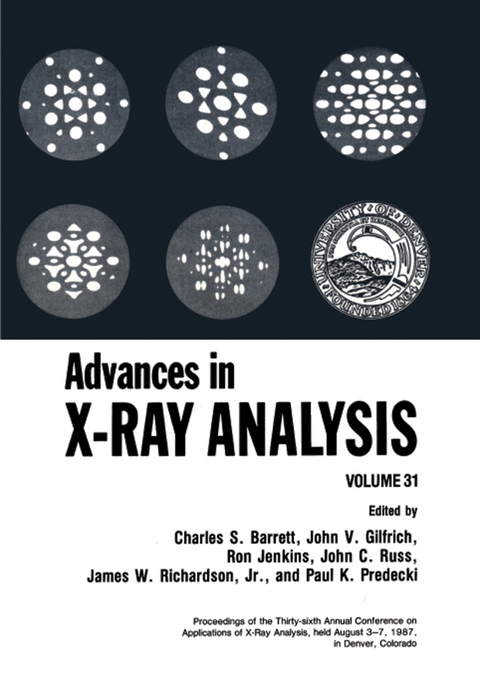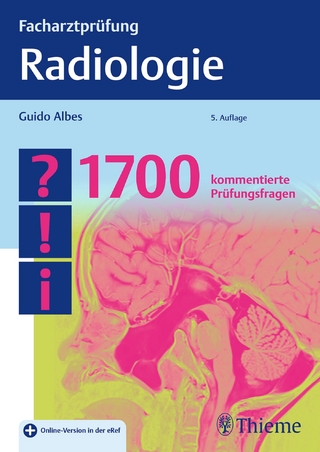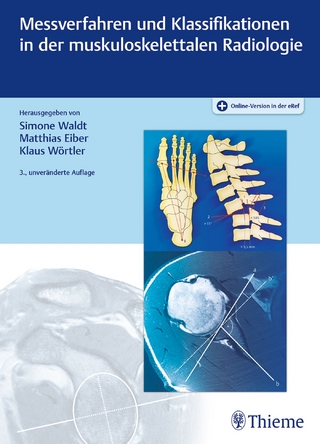
Advances in X-Ray Analysis
Kluwer Academic/Plenum Publishers (Verlag)
978-0-306-42932-3 (ISBN)
- Titel z.Zt. nicht lieferbar
- Versandkostenfrei innerhalb Deutschlands
- Auch auf Rechnung
- Verfügbarkeit in der Filiale vor Ort prüfen
- Artikel merken
I. Microbeam Techniques and Imaging Methods for Materials Characterization.- Microdiffraction with Synchrotron Beams (or Ultra-High Pressure Research).- Microstructural and Chemical Analysis Using Electron Beams: The Analytical Electron Microscope.- X-Ray Imaging of Surface and Internal Structure.- X-Ray Imaging: Status and Trends.- Secondary Ion Mass Spectrometry and Related Techniques.- X-Ray Microscopy using Collimated and Focussed Synchrotron Radiation.- Imaging with Spectroscopic Data.- Small Area X-Ray Diffraction Techniques; Errors in Strain Measurement.- Elemental and Phase Mapping of Sputtered Binary Plutonium Alloys.- An Automated X-Ray Microfluorescence Materials Analysis System.- Industrial Applications of X-Ray Computed Tomography.- II. Characterization of Thin Films by XRD and XRF.- Correlations Between X-Ray Microstructures and Magnetic Properties of CoCrTa Alloy Thin Films.- Defect Structure of Synthetic Diamond and Related Phases.- Microstructural Characterization of Thin Polycrystalline Films by X-Ray Diffraction.- Automated X-Ray Topography and Rocking Curve Analysis: A reliability Study.- Grazing Incidence X-Ray Scattering Studies of Single Quantum Wells.- Dynamical Theory of Asymmetric X-Ray Diffraction for Strained Crystal Wafers.- Dynamical X-Ray Diffraction Simulations for Asymmetric Reflections for III-V Semiconductors Multilayers.- Simultaneous Determination of the Thickness and Composition of Thin Film Samples using Fundamental Parameters.- III. X-Ray Stress/Strain Determination, Fractography, Diffraction, Line Broadening Analysis.- The Phi-Integral Method for X-Ray Residual Stress Measurements.- Oscillations in Interplanar Spacing vs. Sin2?, A FEM Analysis.- Focusing Circle Errors in X-Ray Residual Stress Measurements of Nickel-BasedMaterials.- Residual Stress Analysis in Steels Having Preferred Orientation by Use of Synchrotron Radiation Source.- Macro and Micro-Stress Distributions in Filled Epoxy Systems.- Residual Stress Determination in Al2O3/SiC (Whisker) Composites by X-Ray Diffraction.- A Comparison of Diffraction Elastic Constants of Steel Measured with X-Rays and Neutrons.- Residual Stress in Two Dental Alloys During Porcelain Application.- Pre-Cracking Technique and Its Application to X-Ray Fractography of Alumina Ceramics.- X-Ray Fractography of Stress Corrosion Cracking in AISI 4340 Steel Under Controlled Electrode Potential.- A New Method for Evaluating X-Ray Diffraction Peak Broadening with Engineering Applications.- X-Ray Line Broadening Study on Shock-Modified Hematite.- IV. Quantitative and Qualitative XRD Phase Analysis.- Problems and Solutions in Quantitative Analysis of Complex Mixtures by X-Ray Powder Diffraction.- Preliminary Results from a Powder Diffraction Data Intensity Round-Robin.- The Estimation of Limits of Detection in RIM Quantitative X-Ray Diffraction Analysis.- Automated Quantitative Multiphase Analysis Using a Focusing Transmission Diffractometer in Conjunction with a Curved Position Sensitive Detector.- X-Ray Diffraction Analysis of Fly Ash.- Measuring Graphitic Carbon and Crystalline Minerals in Coals and Bottom Ashes.- V. X-Ray and Neutron Diffraction Applications Including Superconductors.- High Temperature Stability of Superconducting YBa2Cu3Ox as Characterized by X-ray Diffraction.- X-Ray Study of the BaO-Y2O3-CuOx System.- Comparison of Calculated and Experimental Powder X-Ray Diffraction Patterns of Organic Materials.- Neutron Diffraction — A Probe for Grain Size and Preferred Orientation in Zircaloy-Clad Uranium.- Applications of Pulsed Neutron PowderDiffraction to Actinide Elements.- VI. XRD Techniques, Instrumentation and P.C. Applications.- Asymmetric Crystals Re-Visited.- A 4 Crystal Monochromator for High Resolution Rocking Curves.- Laser Aligned Laue Technique for Small Crystals.- A Novel X-Ray Powder-Diffractometer, Measuring Preferred-Orientations.- Using Digitized X-Ray Powder Diffraction Scans as Input for a New PC-AT Search/Match Program.- PC Based Topography Technique.- VII. XRF Techniques, Instrumentation and Mathematical Models.- X-Ray Fluorescence Analysis of Alloy and Stainless Steels Using a Mercuric Iodide Detector.- X-Ray Fluorescence Spectrometry with Gas Proportional Scintillation Counters.- Advances and Enhancements in Light Element EDXRF.- Window Area Effects in the Detector Efficiency for Source Excited EDXRF Geometries.- A New Analysis Principle for EDXRF: The Monte-Carlo — Library Least-Squares Analysis Principle.- Defining and Deriving Theoretical Influence Coefficients in XRF Spectrometry.- VIII. Synchrotron Radiation and Other Applications of XRF.- Appearance Potential X-Ray Fluorescence Analysis.- Near-Surface Analysis of Semiconductor Using Grazing Incidence X-Ray Fluorescence.- A Scanning X-Ray Fluorescence Microprobe with Synchrotron Radiation.- Correction Method for Particle-Size Effect in XRF Analysis of Ore Slurries.- Intensity and Distribution of Background X-Rays in Wavelength Dispersive Spectrometry.- Author Index.
| Zusatzinfo | 542 p. |
|---|---|
| Sprache | englisch |
| Themenwelt | Medizinische Fachgebiete ► Radiologie / Bildgebende Verfahren ► Radiologie |
| Naturwissenschaften ► Chemie ► Analytische Chemie | |
| Naturwissenschaften ► Chemie ► Physikalische Chemie | |
| Naturwissenschaften ► Physik / Astronomie ► Allgemeines / Lexika | |
| Naturwissenschaften ► Physik / Astronomie ► Angewandte Physik | |
| Technik ► Maschinenbau | |
| ISBN-10 | 0-306-42932-2 / 0306429322 |
| ISBN-13 | 978-0-306-42932-3 / 9780306429323 |
| Zustand | Neuware |
| Haben Sie eine Frage zum Produkt? |
aus dem Bereich


